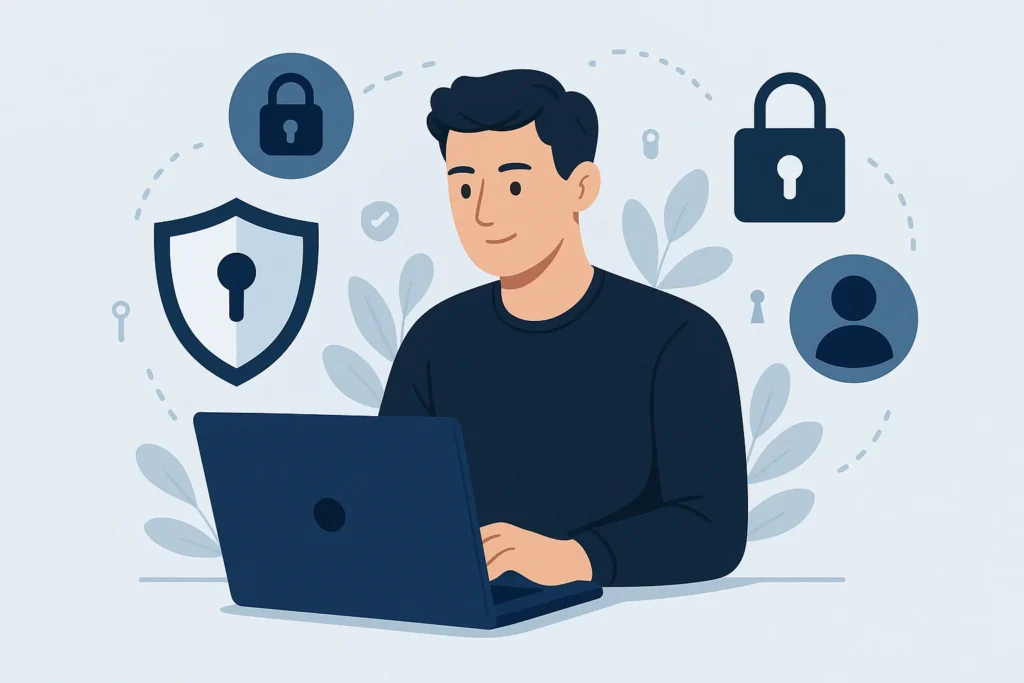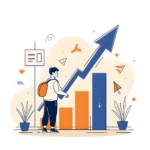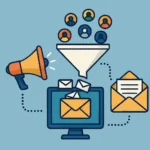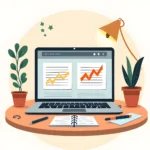Now Reading: 7 Ways to Organize Your Digital Life for Stress-Free Success
-
01
7 Ways to Organize Your Digital Life for Stress-Free Success
7 Ways to Organize Your Digital Life for Stress-Free Success

The notification pings. The overflowing inbox. The forgotten passwords. The files you can never find when you need them. Sound familiar? The digital overwhelm is real, and it’s costing you precious time and mental energy. Organizing your digital life isn’t just about having a tidy desktop-it’s about creating systems that help you work smarter, think clearer, and live better. Today, I’m sharing my battle-tested approach to digital organization that has helped thousands reclaim control of their online existence.
Key Takeaways
- Streamline your digital workspace by decluttering your desktop, organizing files into logical folders, and implementing consistent naming conventions
- Manage your email effectively through inbox zero techniques, folder systems, and regular unsubscribing from unnecessary lists
- Optimize your apps and tools by removing unused applications, organizing remaining ones, and utilizing productivity tools that integrate multiple functions
- Create digital boundaries by scheduling specific times for digital tasks, implementing notification controls, and practicing regular digital detoxes
- Implement automation to handle repetitive tasks, freeing up your mental space for more creative and important work
- Maintain your system with regular digital maintenance sessions to prevent new clutter from accumulating
The Foundation Of Digital Organization
Start With A Digital Declutter
Before building new systems, you need to clear away the existing digital debris. Think of this as your digital spring cleaning-a fresh start that creates space for better habits.
Begin by tackling your computer desktop. Remove unnecessary files and shortcuts that have accumulated over time. Your desktop should only contain items you use daily or are currently working on-everything else belongs in properly organized folders.
Next, address your downloads folder, which tends to become a digital dumping ground. Sort through files, delete what you don’t need, and move important documents to their proper locations. This simple act can free up significant storage space and make your system run more efficiently.
Don’t forget your browser experience. Close unnecessary tabs (bookmark important ones first), delete unused extensions, and organize your bookmarks into logical folders. A streamlined browser means faster performance and less visual distraction.
Create A Logical File Structure
The heart of organizing your digital life is establishing a file system that makes sense to you. The best file structures are intuitive, consistent, and scalable.
Start with broad categories as your main folders-Work, Personal, Finance, Creative Projects, etc. Within these, create subfolders that further categorize your content. For example, within “Work,” you might have folders for different clients or projects.
Naming conventions are crucial. Develop a consistent system that includes relevant information like dates, project names, or status indicators. For instance, “2025-05-Marketing-Campaign-FINAL” tells you at a glance when the file was created, what project it belongs to, and that it’s the final version.
Consider implementing the PARA method (Projects, Areas, Resources, Archives) for organizing your files:
- Projects: Active items with specific deadlines
- Areas: Ongoing responsibilities without deadlines
- Resources: Reference materials you might need
- Archives: Completed projects or inactive information
This system organizes information based on actionability, making it easier to find what you need when you need it.
Useful Articles:
Mastering Email Management
Email remains one of the biggest sources of digital overwhelm. The average professional receives 121 emails daily-no wonder inboxes become unmanageable! Here’s how to take control.
Implement Inbox Zero Techniques
Inbox Zero isn’t about having literally zero emails-it’s about reducing the mental load your inbox creates. The goal is to process emails efficiently so your inbox doesn’t become a to-do list.
Start by setting aside dedicated time for email processing rather than checking sporadically throughout the day. During these sessions, follow the four-step approach for each email:
- Delete it if it’s not relevant
- Delegate it if someone else should handle it
- Respond immediately if it takes less than two minutes
- Defer it to your task management system if it requires more time
Use folders or labels to organize emails that you need to keep. Create categories that align with your projects or areas of responsibility. This makes finding specific emails much easier when you need them later.
Unsubscribe Ruthlessly
One of the most effective ways to reduce email volume is to stop it at the source. Take time to unsubscribe from newsletters and promotional emails that no longer provide value.
Search your inbox for “unsubscribe” to quickly find subscription emails. Services like Unroll.me can help you identify and bulk unsubscribe from multiple lists at once. For subscriptions you want to keep, consider using a separate email address or filtering them into a dedicated folder to review when convenient.
Use Email Filters And Rules
Automate email organization by setting up filters and rules. Most email providers allow you to create conditions that automatically sort incoming messages.
For example, you might create rules that:
- Move messages from specific senders directly to relevant folders
- Flag emails containing certain keywords as important
- Archive notification emails after you’ve read them
- Forward specific types of messages to team members
These automated systems ensure that your inbox contains only what needs your immediate attention, while everything else is organized appropriately.
Streamlining Your Digital Tools And Apps
App overload is a real problem. The average smartphone user has 80+ apps installed but regularly uses only 9-10. This digital bloat consumes storage space and creates unnecessary complexity.
Audit Your Digital Toolbox
Begin by taking inventory of all the apps and programs across your devices. For each one, ask:
- When was the last time I used this?
- Does it serve a unique purpose?
- Could another tool I already use accomplish the same thing?
Be ruthless in deleting apps you haven’t used in the past three months. For desktop applications, uninstall programs that are no longer relevant to your work or personal needs.
For the apps you decide to keep, organize them logically. On smartphones, group similar apps into folders (Productivity, Social, Finance, etc.). On computers, create a streamlined start menu or dock that contains only your most-used programs.
Choose Integrated Solutions
Whenever possible, opt for tools that serve multiple purposes or integrate well with your existing systems. This reduces the number of places you need to check and the amount of context-switching required.
For example:
- Instead of separate note-taking and task management apps, consider an all-in-one solution like Notion
- Use browser extensions that work directly with your productivity system
- Look for tools that offer cross-platform synchronization so you can access your information from any device
The goal is to create a cohesive ecosystem rather than a fragmented collection of tools that don’t communicate with each other.
Optimize Your Notification Settings
Notifications are designed to grab your attention-but not all deserve that privilege. Audit your notification settings across all devices and apps.
For most applications, consider:
- Disabling notifications entirely for non-essential apps
- Limiting notifications to direct messages or mentions for social platforms
- Scheduling “do not disturb” periods during focus time
- Grouping similar notifications to reduce interruptions
Remember that each notification interrupts your focus and can take up to 23 minutes to fully recover from. Be selective about what earns the right to interrupt your day.
Useful Articles:
Creating An Effective Task Management System
Without a reliable system for tracking tasks and projects, important items fall through the cracks or consume mental bandwidth as you try to remember them.
Choose The Right Task Manager
The best task management system is one you’ll actually use consistently. Whether it’s a digital tool like Todoist, Asana, or a simple notes app, select something that matches your workflow.
Look for features that support:
- Task categorization by project or context
- Due date tracking and reminders
- Priority levels to help you focus on what matters most
- The ability to capture tasks quickly when they arise
Your system should make it easy to see what needs your attention today while keeping future tasks organized until they become relevant.
Implement Time Blocking
Time blocking involves scheduling specific periods for different types of work. This technique transforms your calendar from a meeting tracker into a comprehensive plan for your day.
Start by blocking time for your most important deep work-the challenging, high-value tasks that require focused attention. Then schedule blocks for email processing, meetings, administrative work, and even breaks.
This approach ensures that important tasks don’t get pushed aside by urgent but less valuable activities. It also creates clear boundaries between different types of work, reducing the mental cost of context switching.
Practice Weekly Reviews
Even the best system needs regular maintenance. Set aside 30 minutes each week for a review process:
- Capture any loose tasks that haven’t made it into your system
- Review upcoming deadlines and adjust priorities
- Clear completed items and update project statuses
- Plan the week ahead based on your current priorities
This weekly ritual prevents your task management system from becoming outdated or overwhelming. It also provides a valuable opportunity to celebrate progress and adjust course as needed.
Digital Security And Backup Strategies
Organizing your digital life isn’t complete without addressing security and backup considerations. Nothing disrupts digital organization faster than data loss or security breaches.
Implement Password Management
Password reuse across multiple sites is a major security vulnerability, yet remembering unique passwords for dozens of accounts is practically impossible without a system.
A password manager like LastPass, 1Password, or Bitwarden solves this problem by:
- Generating strong, unique passwords for each site
- Securely storing your credentials
- Auto-filling login forms across devices
- Alerting you to potentially compromised accounts
With a password manager, you only need to remember one master password while maintaining strong security across all your digital accounts.
Create A Backup System
Data loss can happen to anyone through hardware failure, theft, or user error. A comprehensive backup strategy follows the 3-2-1 rule:
- 3 copies of your data
- 2 different storage types
- 1 copy stored off-site
For most people, this might mean:
- Your primary copy on your computer
- A local backup on an external hard drive
- A cloud backup service like Backblaze or iDrive
Automated backup solutions are preferable since they don’t rely on you remembering to perform the backup manually.
Secure Your Digital Accounts
Beyond passwords, take additional steps to secure your digital life:
- Enable two-factor authentication on all accounts that offer it
- Regularly review connected apps and revoke access for services you no longer use
- Check privacy settings on social media and other platforms
- Keep your operating systems and applications updated
These security practices protect not just your data but also your digital identity and privacy.
Useful Articles:
Leveraging Automation For Digital Efficiency
One of the most powerful aspects of organizing your digital life is the ability to automate repetitive tasks. Automation frees your attention for more creative and important work.
Identify Automation Opportunities
Start by noting tasks you perform repeatedly. Good candidates for automation include:
- File organization and backup
- Email sorting and responses
- Social media posting and engagement
- Data entry and formatting
- Regular reports or updates
The ideal automation candidates are tasks that follow consistent patterns and don’t require significant creative input.
Explore Automation Tools
Several tools can help implement automation without requiring programming knowledge:
- Zapier connects different apps and creates automated workflows
- IFTTT (If This Then That) creates simple conditional automations
- Microsoft Power Automate or Apple Shortcuts offer platform-specific automation
- Text expanders like TextExpander or PhraseExpress insert frequently used text with short codes
These tools can transform tedious manual processes into seamless automated workflows with minimal setup time.
Start Small And Build
Begin with simple automations that deliver immediate value, then gradually expand your automated systems as you become more comfortable with the tools.
For example, you might start with an automation that saves email attachments to specific folders, then progress to more complex workflows that extract data from emails and update project management tools accordingly.
Document your automations so you remember how they work and can troubleshoot if needed. Regularly review and refine them to ensure they continue to serve your needs as your work evolves.
Maintaining Digital Harmony Long-Term
Creating an organized digital life is an achievement, but maintaining it requires ongoing attention and habit formation.
Schedule Regular Maintenance Sessions
Digital clutter accumulates gradually, making it important to schedule regular maintenance sessions:
- Daily: Quick 5-minute reset at day’s end (close tabs, clear desktop)
- Weekly: 30-minute review of tasks, files, and email
- Monthly: Deeper organization of files and digital assets
- Quarterly: System-wide audit and cleanup
These scheduled sessions prevent small issues from becoming overwhelming problems and help reinforce your organizational systems.
Develop Sustainable Digital Habits
Long-term digital organization depends on building sustainable habits:
- Process new files immediately rather than letting them accumulate
- Follow your naming conventions consistently
- Take an extra moment to save files in their proper locations
- Capture tasks in your system as soon as they arise
Remember that perfect is the enemy of good-aim for systems that are maintainable rather than flawless. The best digital organization system is one you can actually sustain over time.
Practice Digital Minimalism
Consider adopting principles of digital minimalism-the intentional reduction of digital consumption and tool usage. This philosophy encourages:
- Using fewer, better tools rather than accumulating apps
- Being selective about digital subscriptions and content consumption
- Creating boundaries around technology use
- Regularly evaluating whether digital tools are serving your goals
Digital minimalism complements organization by reducing the volume of digital content you need to manage in the first place.
The Productivity Benefits Of Digital Organization
When you invest time in organizing your digital life, the productivity returns are substantial and multifaceted.
Reduced Mental Load
Perhaps the most significant benefit is the reduction in cognitive burden. When your digital environment is organized:
- You spend less mental energy remembering where things are
- You experience fewer decision points about where to save or find information
- You reduce the anxiety associated with digital chaos
This mental clarity creates space for deeper thinking and creative problem-solving.
Improved Focus And Flow
An organized digital environment supports sustained attention and flow states:
- Clear file structures eliminate the distraction of searching for documents
- Streamlined tools reduce context switching
- Controlled notifications preserve your attention for important work
- Automated workflows remove interruptions from repetitive tasks
These conditions create the perfect environment for deep work-the kind that produces your most valuable contributions.
Enhanced Collaboration
Your digital organization doesn’t just benefit you; it improves collaboration with others:
- Colleagues can understand your file structures and naming conventions
- Shared resources are easier to locate and utilize
- Your responsiveness improves when email and messages are properly managed
- Your reliability increases when tasks and deadlines are systematically tracked
Well-organized digital systems make you a better team member and collaborator.
Organizing your digital life isn’t a one-time project but an ongoing practice that evolves with your needs and the changing digital landscape. By implementing these strategies-from decluttering and file organization to automation and maintenance-you’ll create a digital environment that supports your productivity rather than hindering it. The time you invest in digital organization pays dividends in reduced stress, improved focus, and reclaimed time. Start small, be consistent, and watch as digital chaos transforms into digital harmony.
Useful Articles:





















